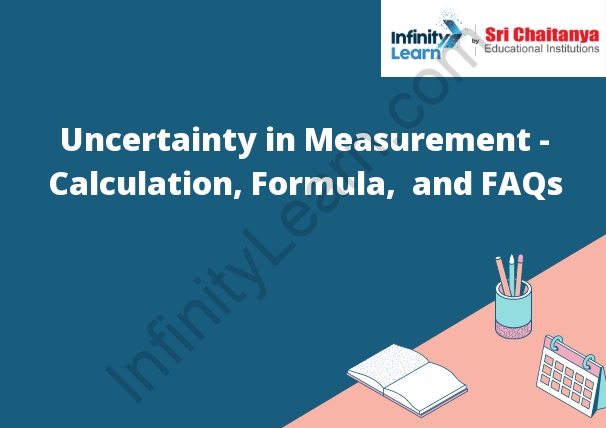Table of Contents
Scientific Notation ;
Scientific notation is a way to express numbers that are too large or too small to be conveniently written in standard form. It involves expressing a number in terms of a number between 1 and 10 multiplied by a power of 10. For example, the number 123,456,789 can be written as 1.23456 × 109. Uncertainty in Measurement – Calculation Formula and FAQs.

Uncertainty Calculation in the Presence of Error
When calculating the uncertainty of a result, the error in the measurement must be taken into account. This means that the uncertainty calculation must account for both the random and systematic errors in the measurement. Random errors are caused by fluctuations in the measurement, and are due to the inherent variability of the measurement process. Systematic errors are caused by incorrect assumptions in the calculation, or by incorrect alignment of the measurement equipment. Systematic errors can be reduced by taking multiple measurements and averaging them, but random errors cannot be reduced.
The uncertainty of a measurement is given by the standard deviation of the measurement. This is a measure of the variability of the measurement, and is calculated by taking the square root of the variance of the measurement. The variance is calculated by taking the sum of the squares of the deviations of the measurement from the mean, and dividing by the number of measurements.
The uncertainty of a result can be reduced by taking more measurements and averaging them. This reduces the random errors, but does not reduce the systematic errors. Uncertainty in Measurement – Calculation Formula and FAQs.
Uncertainty in Addition and Subtraction:
In mathematics, uncertainty in addition and subtraction is the inherent imprecision of numerical operations. This imprecision can be caused by the limitations of the number of significant digits that can be represented in a number, the rounding of numbers to fit within a given number of significant digits, and the estimation of intermediate results.
In some cases, the imprecision in a calculation can be reduced by taking into account the uncertainty in the individual operations. For example, the uncertainty in the sum of two numbers can be reduced by taking the average of the two numbers. However, in many cases, the imprecision in a calculation is unavoidable.
Uncertainty in addition and subtraction can be a significant source of error in mathematical models and scientific calculations. In particular, the imprecision can cause the results of a calculation to be significantly different from the actual value of the quantity being calculated.
Percentage Uncertainty Formula:
The percentage uncertainty formula is used to calculate the uncertainty of a measured value. The formula uses the standard deviation of the measured value and the measured value itself. The standard deviation is a measure of the variability of the measured value and is used to calculate the uncertainty. The percentage uncertainty is the uncertainty of the measured value expressed as a percentage of the measured value.







